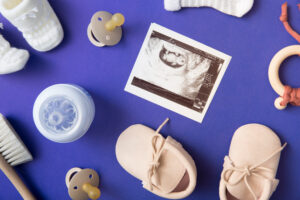BLW involves trusting your baby to self-feed and following their cues for eating. No special preparation is necessary since babies can eat some of whatever else the rest of the family is having for dinner.
Make the decision wisely before initiating, however. Check with a pediatrician first before moving forward with any plans.
How to Start
Baby-led weaning (BLW), is becoming an increasingly popular way for infants to make this transition. Additionally, it helps develop motor skills while honing tastebuds!
BLW encourages self-feeding, which may help babies better regulate their food intake. While spoon-feeding may force a child to consume more than necessary and lead to weight gain, with BLW they are allowed to stop when full.
BLW can be an enjoyable, healthy method of weaning for both you and your baby, while being highly convenient. As all family members eat similar foods, there’s not as much extra cooking required; plus babies begin getting used to different textures from an early age.
Before embarking on baby-led weaning, be sure to first consult with your pediatrician. Even if they approve, it may still be wise to include speech pathologist or dietician consultation if your child has special healthcare requirements like prematurity or dysphagia, or drinks specialized formula. This will ensure they can safely swallow their food.
What to Feed
Babies can begin baby-led weaning as soon as they can sit up upright without support, reach for objects to bring to their mouths (an indication they are ready to learn the connections between hands and mouth), turn their head away when fullness occurs or make vocal signals such as gagging – these indicators indicate it might be time to put down their fork.
At this stage, it is recommended to avoid foods which pose a high risk of choking, such as whole peanuts or other nuts; raw, hard-textured vegetables (carrots and squash); unpasteurized cheese and milk; honey; in favor of soft ripe fruits and veggies such as soft-ripened tomatoes, soft ripe fruits like strawberries, soft baked or roasted chicken or fish strips as well as steamed sweet potatoes or zucchini.
Baby-led weaning offers parents many benefits, not least saving them time when it comes to food preparation. Instead, parents can simply allow baby to eat small bits from whatever the rest of the family is having at mealtimes (timed after breast or bottle feedings). Furthermore, this method may promote healthier habits since babies who feed themselves are less likely to gain extra pounds through overfeeding by their parents – who may feel pressured into providing additional bites even when told their child has eaten enough!
How Much to Feed
At about the age of 6-8 months, babies will have advanced enough in their fine motor skills to pick up small objects (such as Cheerio) with just their thumb and forefinger – this is known as pincer grasp and marks an important developmental milestone. At this stage, they can begin practicing self-feeding skills with soft foods like Cheerios.
Self-feeding is the ideal way for infants to learn how to regulate their food intake and self-regulate. While it’s common for a baby to consume very little or reject new foods at first, be patient as this process could take up to 20 exposures before success!
BLW feeding plans can also be an ideal choice for babies with allergies, since parents don’t have to worry about sneaking extra bites of potentially allergenic food such as peanuts, eggs or shellfish into your toddler’s diet without consulting with their pediatrician first. But before making decisions based on this method alone it’s always wise to consult your physician as to when to introduce potential allergens like nuts, eggs or shellfish into their diet.
Are you new to baby led weaning (BLW) and need assistance getting started? Make an appointment with a registered dietitian; they’ll explain the process, why it is an ideal solution, and provide nutritious recipes to try with your infant.
Safety
Baby-led weaning (BLW) enables your child to gain independence through self-feeding, thus teaching control over what and how much is consumed, according to research studies. BLBW can also reduce picky eating later on, according to experts.
Baby-led weaning (BLW) allows infants to begin feeding themselves finger foods from around 6 months on, rather than being spoon-fed purees. According to registered dietitian Clancy Cash Harrison, BLBW can also help develop your infant’s motor development: Babies who can sit upright without support while developing pincer grasp (a fine motor skill used for picking things up) are prime candidates for baby-led weaning.
Though baby-led weaning hasn’t been shown to increase choking risk, parents still need to follow their baby’s cues and remain alert during mealtimes. Additionally, it would be wise for you to enroll in a pediatric CPR course so you’re equipped with quick responses in case of emergencies.
As part of your planning, it’s also wise to consult your pediatrician and any healthcare providers related to your baby, such as their prematurity or any condition affecting swallowing and feeding such as dysphagia. And make sure all those caring for them understand the dietary approach as this will prevent any confusion or conflicting advice from being given.





